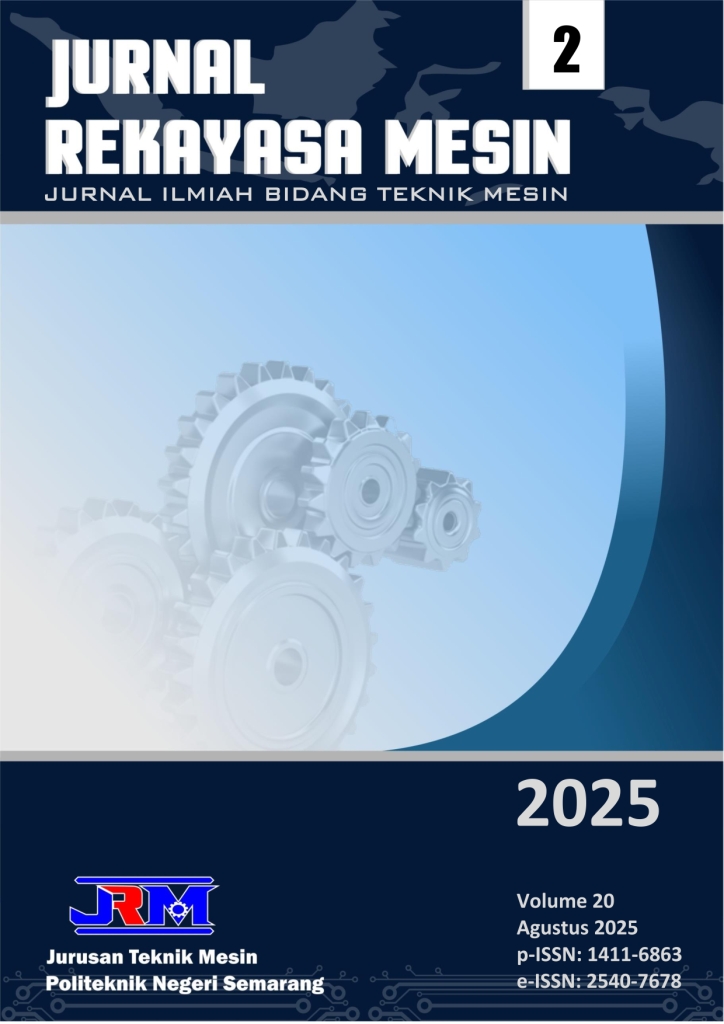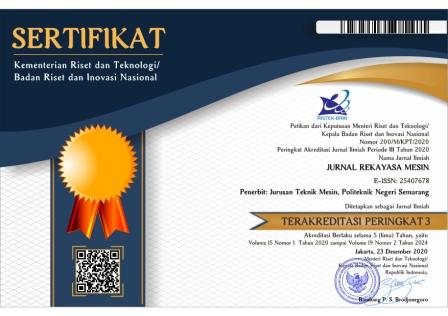Clustering-Based Analysis of Fuel Efficiency and Emissions in Automotive Data Using PCA and K-Means
DOI:
https://doi.org/10.32497/jrm.v20i2.6709Keywords:
clustering, CO₂ emissions, data analysis, fuel consumption, machine learningAbstract
Growing concerns regarding greenhouse gas emissions and fuel consumption have placed considerable demands on the automotive sector. To address these issues, this research applies unsupervised learning approaches namely Principal Component Analysis (PCA) and K-Means Clustering to categorize vehicles based on attributes associated with energy efficiency and environmental impact. Using a publicly available vehicle dataset, PCA was used to simplify the data by reducing dimensionality while preserving significant patterns. Subsequently, K-Means was employed to segment the data into three distinct clusters according to shared features like engine size, fuel usage, and CO₂ output. The resulting groupings effectively identified categories such as fuel-efficient, moderately consuming, and high-consumption vehicles. Visual representation in two-dimensional space further confirmed meaningful distinctions among the clusters, offering practical insights for both manufacturers and consumers.
References
[1] C. Llopis-Albert, F. Rubio, and F. Valero, "Impact of digital transformation on the automotive industry," Technological forecasting and social change, vol. 162, p. 120343, 2021.
[2] S. S. Ravi, S. Osipov, and J. W. Turner, "Impact of modern vehicular technologies and emission regulations on improving global air quality," Atmosphere, vol. 14, no. 7, p. 1164, 2023.
[3] A. A. Gheidan, M. B. A. Wahid, O. A. Chukwunonso, and M. F. Yasin, "Impact of internal combustion engine on energy supplyand its emission reduction via sustainable fuel source," 2022.
[4] O. A. Towoju and F. A. Ishola, "A case for the internal combustion engine powered vehicle," Energy Reports, vol. 6, pp. 315-321, 2020.
[5] D. L. Bleviss, "Transportation is critical to reducing greenhouse gas emissions in the United States," Wiley Interdisciplinary Reviews: Energy and Environment, vol. 10, no. 2, p. e390, 2021.
[6] K. H. D. Tang, "Climate change policies of the four largest global emitters of greenhouse gases: Their similarities, differences and way forward," Journal of Energy Research and Reviews, vol. 10, no. 2, pp. 19-35, 2022.
[7] M. A. Saleem, L. Eagle, and D. Low, "Determinants of eco-socially conscious consumer behavior toward alternative fuel vehicles," Journal of Consumer Marketing, vol. 38, no. 2, pp. 211-228, 2021.
[8] S. Sibdari and Y. Asayesh, "Eco-drive or tax strive? Assessing consumer vehicle selection behavior under carbon taxation," Journal of Cleaner Production, vol. 479, p. 143869, 2024.
[9] Á. N. Choisdealbha, S. Timmons, and P. D. Lunn, "Experimental evidence for the effects of emissions charges and efficiency information on consumer car choices," Journal of Cleaner Production, vol. 254, p. 120140, 2020.
[10] V. Pillai, "Data Analytics and Engineering in Automobile Data Systems," Journal of Science & Technology, vol. 4, no. 6, pp. 140-79, 2023.
[11] N. L. Rane, M. Paramesha, S. P. Choudhary, and J. Rane, "Machine learning and deep learning for big data analytics: A review of methods and applications," Partners Universal International Innovation Journal, vol. 2, no. 3, pp. 172-197, 2024.
[12] M. Chaudhry, I. Shafi, M. Mahnoor, D. L. R. Vargas, E. B. Thompson, and I. Ashraf, "A systematic literature review on identifying patterns using unsupervised clustering algorithms: A data mining perspective," Symmetry, vol. 15, no. 9, p. 1679, 2023.
[13] K. Tyagi, C. Rane, R. Sriram, and M. Manry, "Unsupervised learning," in Artificial intelligence and machine learning for edge computing: Elsevier, 2022, pp. 33-52.
[14] S. Nanga et al., "Review of dimension reduction methods," Journal of Data Analysis and Information Processing, vol. 9, no. 3, pp. 189-231, 2021.
[15] P. Ray, S. S. Reddy, and T. Banerjee, "Various dimension reduction techniques for high dimensional data analysis: a review," Artificial Intelligence Review, vol. 54, no. 5, pp. 3473-3515, 2021.
[16] T. M. Ghazal, "Performances of k-means clustering algorithm with different distance metrics," Intelligent Automation & Soft Computing, vol. 30, no. 2, pp. 735-742, 2021.
[17] S. Salloum, K. Alhumaid, A. Salloum, and K. Shaalan, "K-means Clustering of Tweet Emotions: A 2D PCA Visualization Approach," Procedia Computer Science, vol. 244, pp. 30-36, 2024.
[18] S. M. Miraftabzadeh, C. G. Colombo, M. Longo, and F. Foiadelli, "K-means and alternative clustering methods in modern power systems," Ieee Access, vol. 11, pp. 119596-119633, 2023.
[19] S. Bandyopadhyay, S. Thakur, and J. Mandal, "Product recommendation for e-commerce business by applying principal component analysis (PCA) and K-means clustering: benefit for the society," Innovations in Systems and Software Engineering, vol. 17, no. 1, pp. 45-52, 2021.
[20] P. S. Bishnu and A. D. Purkayastha, "From Data to Decisions: K-Means Clustering for Product Development and Marketing," in AI for Product Development: CRC Press, pp. 20-41.
[21] S. Kumar, M. Suhaib, and M. Asjad, "Narrowing the barriers to Industry 4.0 practices through PCA-Fuzzy AHP-K means," Journal of Advances in Management Research, vol. 18, no. 2, pp. 200-226, 2021.
[22] D. Zhao et al., "A review of the data-driven prediction method of vehicle fuel consumption," Energies, vol. 16, no. 14, p. 5258, 2023.
[23] Y. Yao et al., "Vehicle fuel consumption prediction method based on driving behavior data collected from smartphones," Journal of Advanced Transportation, vol. 2020, no. 1, p. 9263605, 2020.
Downloads
Published
How to Cite
Issue
Section
License
Copyright (c) 2025 Sunardi, Ananda Nur Daffa Zain

This work is licensed under a Creative Commons Attribution-NonCommercial-ShareAlike 4.0 International License.
Copyright of articles that appear in Jurnal Rekayasa Mesin belongs exclusively to Penerbit Jurusan Teknik Mesin Politeknik Negeri Semarang. This copyright covers the rights to reproduce the article, including reprints, electronic reproductions, or any other reproductions of similar nature.







